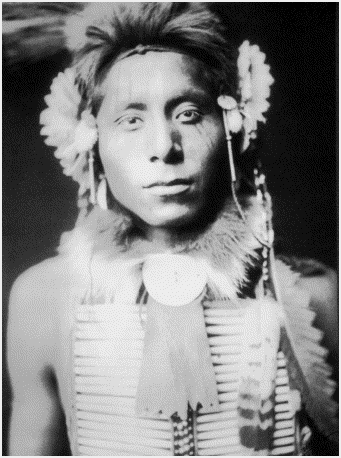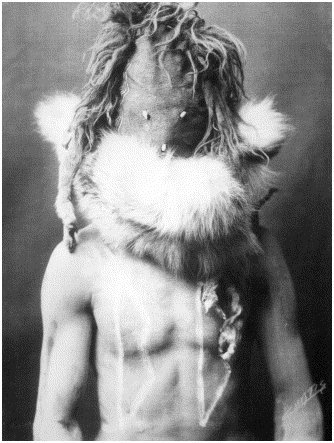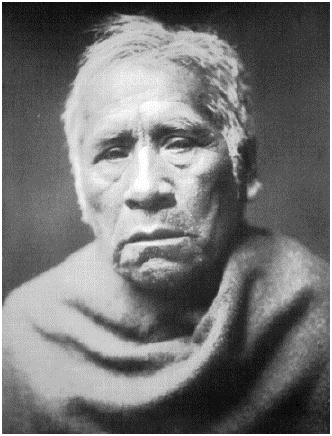The Master Prints
Dan L. Monroe, Editor
(Arena Editions/PGW)

The trove consists of 180 platinum prints of American Indians taken at the turn of the 20th Century. Approximately half of the found photographs are presented here, in lovely reproduction. Most are full face, full page close-ups of men, women, and children; there are a few of men in traditional masks, or in ceremonial dance; and a scattering representing men or women at work threshing wheat or weaving.
Curtis was a professional photographer living in Seattle, and, at the time he produced these pictures he had embarked on his second career --- which was to last over twenty-five years --- of documenting the lives of American Indians. Because he worked directly for J. Pierpont Morgan, he was free of the usual academic or governmental restrictions.
 By the time he died in mid-century, he had collected almost 300,000 photogravure prints, had published a set of volumes called The North American Indian, had made a feature-length motion picture devoted to Indian life, and gathered 10,000 voice recordings of native speech and song. But, as Worswick tells us, at the time of Curtis' dying --- in poverty --- his works had been all but ignored by the ethnologists of the time.
By the time he died in mid-century, he had collected almost 300,000 photogravure prints, had published a set of volumes called The North American Indian, had made a feature-length motion picture devoted to Indian life, and gathered 10,000 voice recordings of native speech and song. But, as Worswick tells us, at the time of Curtis' dying --- in poverty --- his works had been all but ignored by the ethnologists of the time.
These are romantic pictures, in the "pictorialist tradition." Great care was taken in the technique, the paper, and the final surface. They were considered "painterly." The editor tells us,
In the photographs of the pictorialist tradition, peasants were uplifted, and photographers detailed righteous country work...Curtis pursued both an art vision and a higher artistic truth about his subject.
There was dramatic lighting and composition, close-ups carrying the freight of the "noble savage," where "American ideas of manifest destiny where added to the various premises of the British Arts and Crafts movement." However, the photographer was free to experiment with truth (and, presumably, beauty), where
a Gros Ventre chief posed against the Tetons in a war bonnet that Curtis appropriated from the Sioux.
It's still lovely stuff, and no amount of doctoring or romanticizing can falsify the haunting faces that fill these pages. If there is no dirt nor squalor, there is at the same time no shame or humility. These are gorgeous people with the artifacts of clothing and tools and hair and eyes and the very set of faces that bespeaks power and grace. If Curtis set out to glorify a people who had been scandalously misused, he succeeded. If he set out to change the way they were treated by exploitative hunters, trappers, politicians and the BIA --- he, to our eternal shame --- failed.
